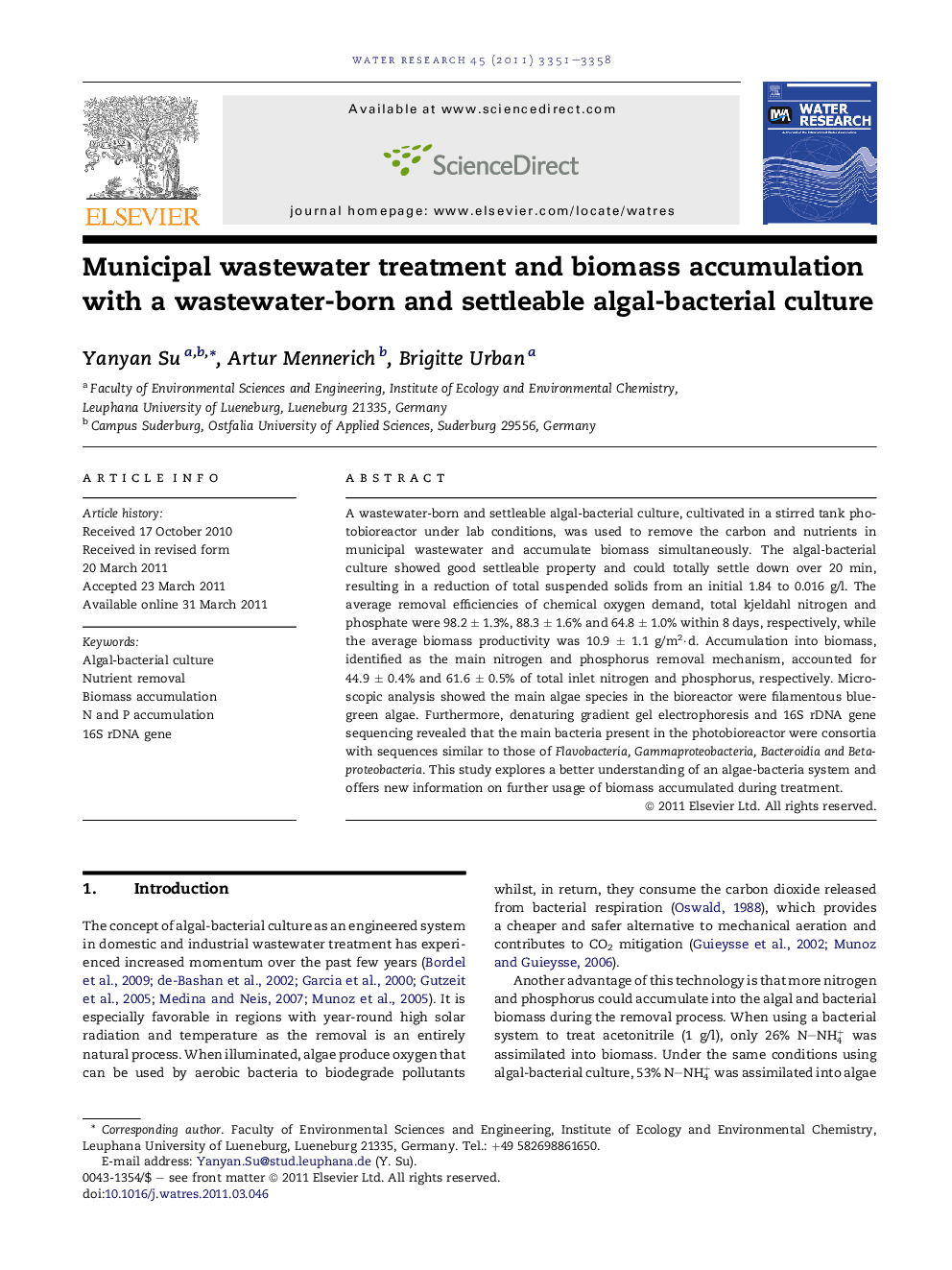| Article ID | Journal | Published Year | Pages | File Type |
|---|---|---|---|---|
| 4483511 | Water Research | 2011 | 8 Pages |
A wastewater-born and settleable algal-bacterial culture, cultivated in a stirred tank photobioreactor under lab conditions, was used to remove the carbon and nutrients in municipal wastewater and accumulate biomass simultaneously. The algal-bacterial culture showed good settleable property and could totally settle down over 20 min, resulting in a reduction of total suspended solids from an initial 1.84 to 0.016 g/l. The average removal efficiencies of chemical oxygen demand, total kjeldahl nitrogen and phosphate were 98.2 ± 1.3%, 88.3 ± 1.6% and 64.8 ± 1.0% within 8 days, respectively, while the average biomass productivity was 10.9 ± 1.1 g/m2·d. Accumulation into biomass, identified as the main nitrogen and phosphorus removal mechanism, accounted for 44.9 ± 0.4% and 61.6 ± 0.5% of total inlet nitrogen and phosphorus, respectively. Microscopic analysis showed the main algae species in the bioreactor were filamentous blue-green algae. Furthermore, denaturing gradient gel electrophoresis and 16S rDNA gene sequencing revealed that the main bacteria present in the photobioreactor were consortia with sequences similar to those of Flavobacteria, Gammaproteobacteria, Bacteroidia and Betaproteobacteria. This study explores a better understanding of an algae-bacteria system and offers new information on further usage of biomass accumulated during treatment.
Highlight► Cultivate a settleable and wastewater-born algal-bacterial culture. ► Realize simultaneous and high efficiency carbon and nutrients removal. ► Monitor the process of biomass, N and P accumulation during the treatment. ► Identify the microbial consortium as an addition of knowledge in this area.
